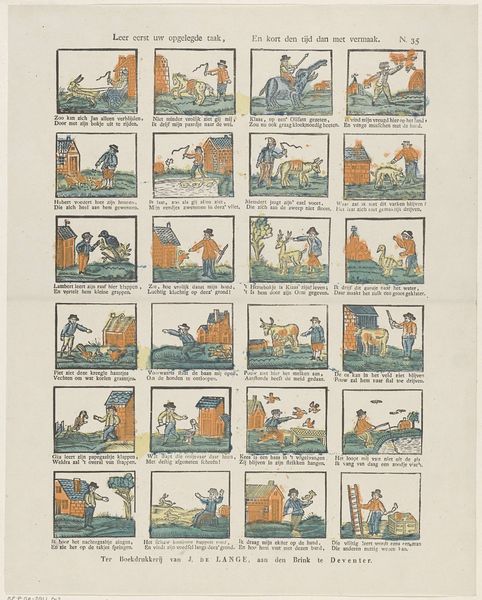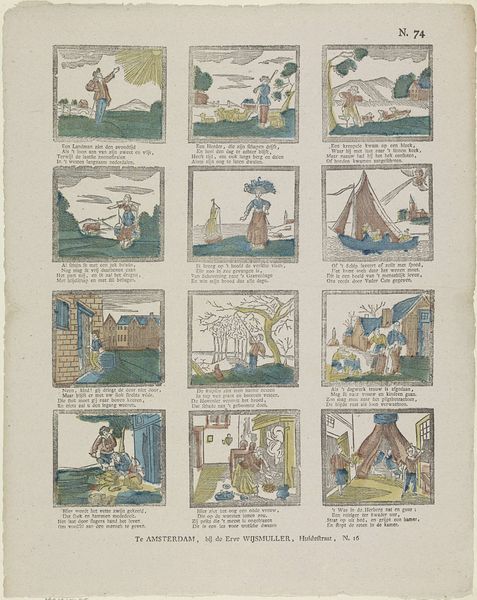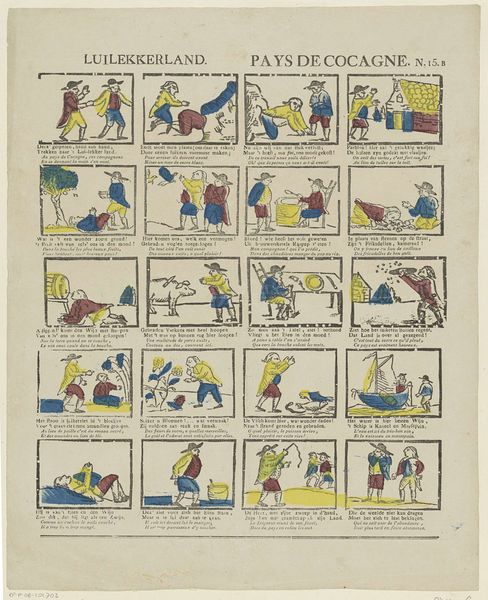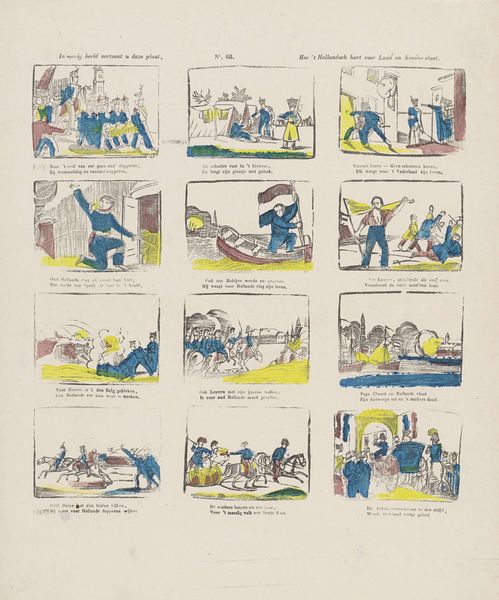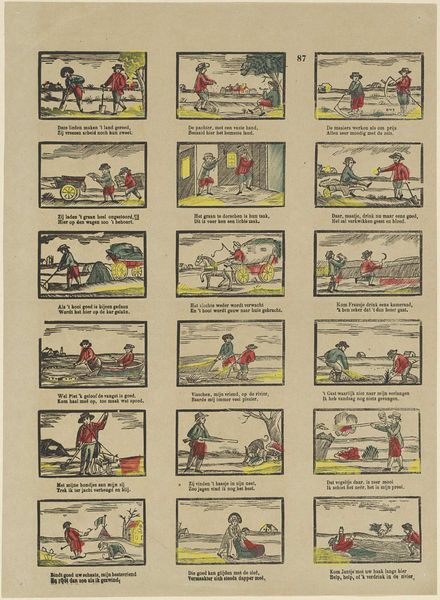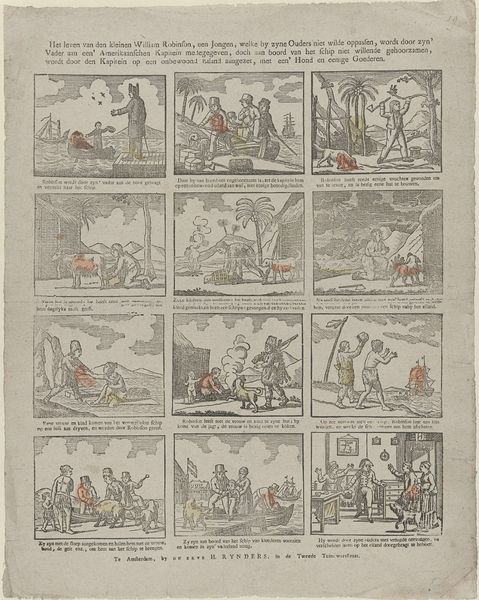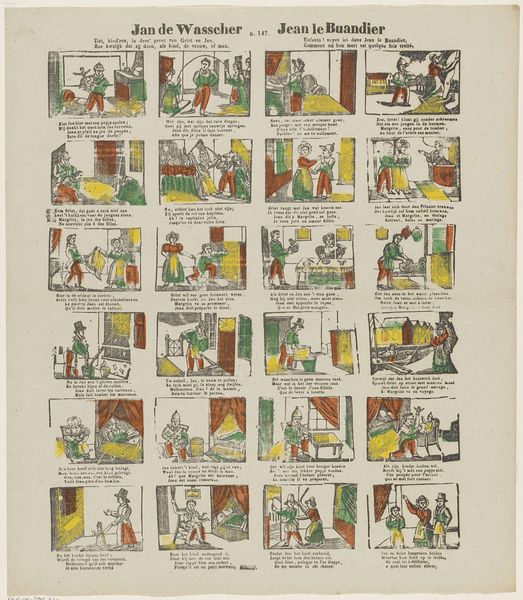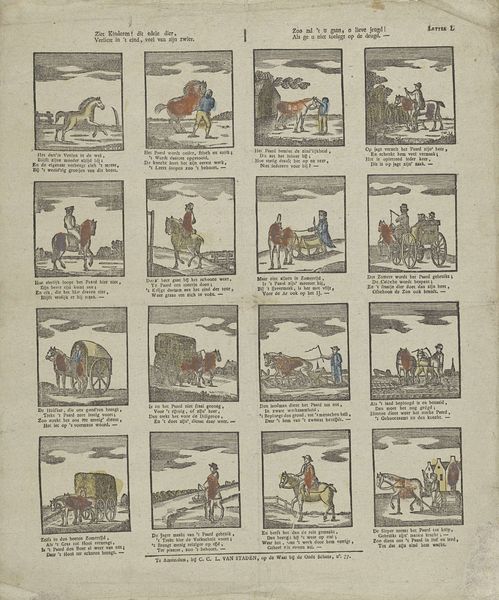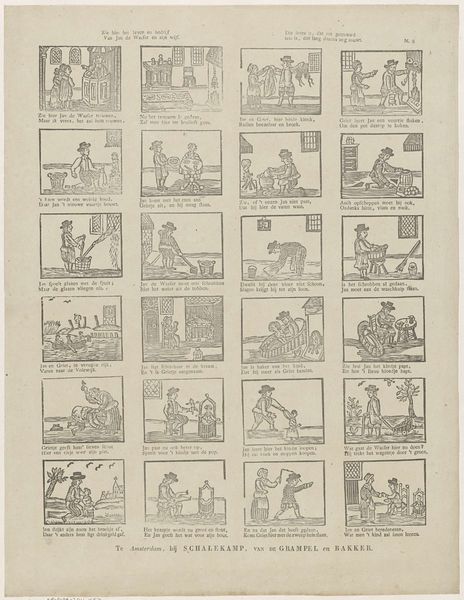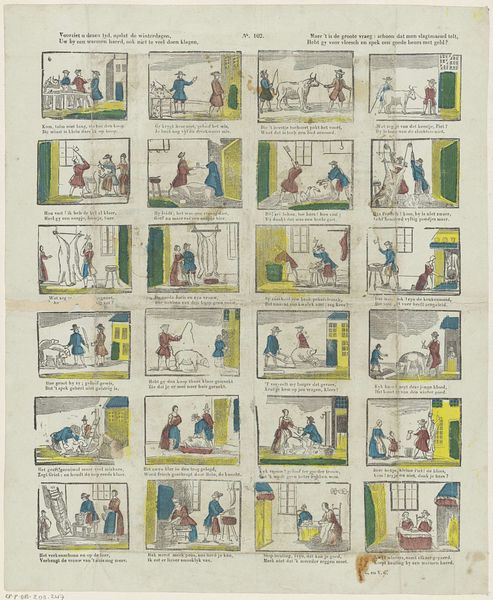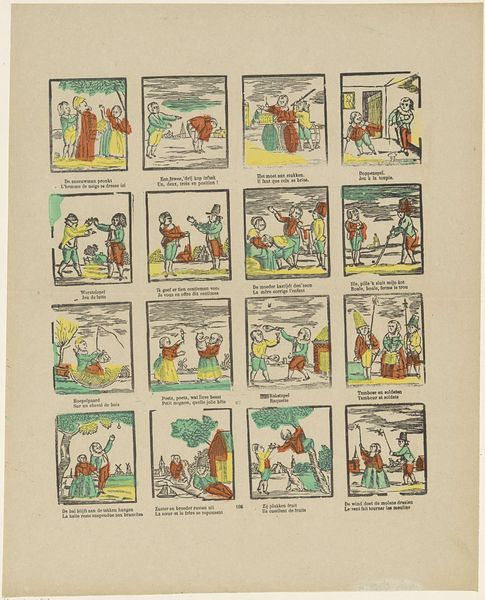
graphic-art, print
#
graphic-art
#
narrative-art
# print
#
genre-painting
Dimensions: height 415 mm, width 322 mm
Copyright: Rijks Museum: Open Domain
Curator: This is "Kinderspelen en bezigheden," or "Children’s Games and Activities," a print dated from 1822 to 1849 by I.I. de Lanier. Editor: My initial reaction is one of nostalgia. These little vignettes, laid out like scenes from a play, evoke a strong sense of childhood—simplicity and playfulness rendered in print. Curator: The material aspect is crucial here. Think about the labor involved in creating these prints, presumably destined for widespread, accessible consumption. This wasn't high art displayed in a salon; it was functional art for the masses. It highlights how knowledge was disseminated and constructed through mass production. Editor: Absolutely. And I'm drawn to the symbolic nature of play. Skipping rope, tending sheep, sharing food – each scene represents a micro-narrative. The actions themselves reflect themes of nurturing, skill development, and social interaction that echo broader cultural values around childhood and community. They show a simplified social structure through a child's eyes. Curator: Furthermore, examine the printing process. The use of simple lines, the limited color palette…these weren't aesthetic limitations so much as deliberate choices impacting both production time and cost. It’s art inextricably bound to its means of distribution and market. Notice how this technique democratized images and promoted common societal goals to a widespread audience. Editor: It speaks to a cultural memory we've lost in a way. A pre-industrial childhood presented through a simplified, but emotionally rich visual language. A stark contrast to our modern understanding where such unconstructed free-play for children can seem quite rare. Curator: Seeing this work now also illuminates assumptions of labour and value. Consider who created these, for whom, and the layers of historical significance inherent in something so outwardly unassuming. Editor: Indeed. I am reminded of art's ability to distill complex emotions into accessible symbols—and in this case how childhood is represented in visual codes which were both charming and didactic. Curator: A closer inspection underscores how production dictated the art object's life, impacting cultural norms and ideas concerning its creation and dissemination. Editor: Well, the symbolism for me illuminates how we constantly seek connection, to each other, our past, through imagery regardless of period or production.
Comments
No comments
Be the first to comment and join the conversation on the ultimate creative platform.
